

Waldorf Graduates Pursue Meaningful Careers
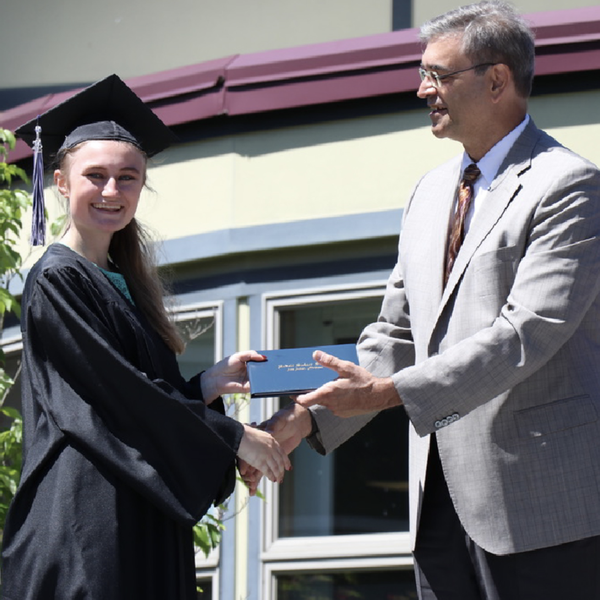
Will My Child Succeed After Waldorf High School? The Research Says Yes
Choosing a high school is a critical decision, and parents often wonder: Will this education prepare my child for college, career, and life?
For families considering Waldorf high schools, this question is especially relevant. With experiential learning, seminar-style discussions, and an interdisciplinary curriculum, can Waldorf truly equip students for fields like medicine, law, technology, and business?
Decades of research say yes.
Waldorf Graduates Excel in Higher Education and Careers
A 60-year study (Survey of Waldorf Graduates, Phase II, Mitchell & Gerwin, 2007) found that:
- 94% of Waldorf graduates attend college.
- 42% major in science-related fields—more than double the national average.
- Many earn advanced degrees in medicine, law, engineering, business, and the arts.
- Alumni thrive in fields ranging from finance and research to entrepreneurship and sustainability.
Waldorf Alumni Spotlight: Science in Action
After earning a degree in Earth Systems Engineering from the University of Michigan, Gavin Chensue ('06) joined the NOAA Commissioned Officer Corps, leading critical climate studies worldwide.
"Steiner education gave me a taste of everything. When I needed direction in college, I remembered how much I loved studying weather and geology—and that led me to where I am today." - Gavin Chensue (RSSAA '06), Research Engineer at SRI International, Former NOAA Corps Officer
His story highlights how Waldorf graduates succeed in STEM, combining curiosity and real-world problem-solving to make a global impact.
Read the full studies:
- Survey of Waldorf Graduates, Phase II: https://www.waldorfeducation.org/research
- Into the World Study: https://www.waldorfeducation.org/graduate-outcomes
What Makes a Waldorf Education So Effective?
Contrary to the belief that test-driven education leads to success, research shows that employers and universities highly value graduates who:
✔ Think critically and independently
✔ Communicate clearly and persuasively
✔ Collaborate effectively
✔ Solve complex problems
✔ Adapt to a changing world
These are precisely the skills Waldorf high schools cultivate.
1. Depth Over Memorization: Lifelong Knowledge Retention
Rather than rote memorization, Waldorf fosters deep understanding:
- History is explored through primary sources and narratives.
- Science emphasizes hands-on experiments and independent research.
- Mathematics focuses on real-world application.
- Literature and philosophy encourage analytical discussions.
One employer noted:
“Waldorf students don’t just look for the right answer—they explore the why and how behind complex issues.”
2. Seminar-Style Learning Develops Exceptional Communicators
Waldorf emphasizes oral presentations, debates, and collaborative discussions, preparing graduates for leadership roles in law, finance, business, and medicine.
Dr. Ilan Safit, co-author of *Into the World*, states:
“We consistently hear that Waldorf graduates excel at teamwork and leadership. Their ability to articulate complex ideas is a major asset.”
A study from Da Vinci Waldorf School found that Waldorf students select careers based on values and passion rather than prestige or income.
Final Thoughts: The Research Speaks for Itself
Professors and employers highlight Waldorf graduates’ intellectual curiosity and ability to think independently.
With strong college attendance rates, success across multiple professions, and the skills needed to navigate a complex world, one thing is clear:
Waldorf graduates don’t just succeed—they thrive.
Professors and employers highlight Waldorf graduates’ intellectual curiosity and ability to think independently.
With strong college attendance rates, success across multiple professions, and the skills needed to navigate a complex world, one thing is clear:
Waldorf graduates don’t just succeed—they thrive.
Read more on Waldorf Graduates
The Power of Hands-On Science Education
Research shows that hands-on learning is extremely effective for students of all ages, particularly when it comes to science education. Waldorf Education employs an experiential approach in all subjects, especially in science. Students learn through observation and experimentation, rather than just memorizing formulas. This engages the senses and encourages critical thinking and problem-solving, which fosters wonder, curiosity, and a deeper understanding of scientific phenomena.
Learning about science through listening to lectures and reading about it, though valuable, isn’t always enough to truly engage students. Learning by doing science through hands-on science activities and experiments lets students see what they’ve learned in action and develop a deeper understanding of the subject. Hands-on learning is just another way to refer to learning by doing. Allowing students to discover more about scientific concepts through hands-on science activities, experiments, and projects is a proven way to increase engagement and academic achievement.
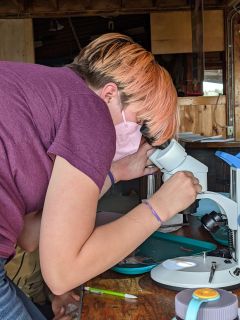 A study done by the Canadian Center of Science and Education found that children can learn mathematics and sciences effectively even before being exposed to formal school curriculum if basic mathematics and science concepts are communicated to them early using activity-oriented (hands-on) methods of teaching. Mathematics and science are practical and activity oriented and can best be learned through inquiry (Okebukola in Mandor, 2002) and through intelligent manipulation of objects and symbols (Ekwueme, 2007). The study looked at the impact of a hands-on approach on students’ academic performance and the students’ opinion about this activity-based methodology and showed positive improvement in both the students’ performance and participation in mathematics and basic science activities and willingness on the part of the teachers to use hands-on approaches in communicating mathematical and scientific concepts to their students.
A study done by the Canadian Center of Science and Education found that children can learn mathematics and sciences effectively even before being exposed to formal school curriculum if basic mathematics and science concepts are communicated to them early using activity-oriented (hands-on) methods of teaching. Mathematics and science are practical and activity oriented and can best be learned through inquiry (Okebukola in Mandor, 2002) and through intelligent manipulation of objects and symbols (Ekwueme, 2007). The study looked at the impact of a hands-on approach on students’ academic performance and the students’ opinion about this activity-based methodology and showed positive improvement in both the students’ performance and participation in mathematics and basic science activities and willingness on the part of the teachers to use hands-on approaches in communicating mathematical and scientific concepts to their students.
What Is Hands-On Science?
Hands-on science can be defined as students getting their hands on materials, performing experiments, exploring phenomena, and trying out ideas. According to research, hands-on science usually involves “physical materials to give students first-hand experience in scientific methodologies” but can also include virtual labs. Labs, experiments, and projects are all potential hands-on science activities.
Why Hands-On Learning Is Important in Science
Hands-on learning is more than just a way to get students to experiment with science equipment or be immersed in a virtual world. Also, hands-on learning does more than bring fun to learning. This approach is proven to increase student engagement and understanding of scientific concepts.
Hands-on learning can also connect to inquiry-based learning in science, another teaching approach that’s proven to increase student engagement. Inquiry-based science instruction encourages students to ask questions they are interested in and investigate those questions. Hands-on science is one of many ways students can explore inquiries, whether the procedure is designed by the teacher or student. Let’s delve into the additional benefits of hands-on learning in science.
Benefits of Hands-On Learning in Science
Increases Retention: Active learning, such as through hands-on activities, has been proven to be effective at promoting retention. When students apply what they’ve learned in the classroom through hands-on science experiments and activities, students can better understand concepts.
- Improves Performance on Assessments: Research from the University of Chicago shows that hands-on science can improve student outcomes. Participating in the learning process through learning by doing helps students forge a deeper understanding of the scientific concepts taught in class.
- Provides a Sense of Accomplishment: Teachers have recognized that hands-on science provides students with a sense of accomplishment. At the end of a hands-on activity or experiment, students can see the immediate results of their learning. Learning new ideas can take a long time, but when the learning is hands-on, students reach a clear stopping point and can look back at what they did.
- Supports Students with Learning Barriers: Hands-on learning is a proven way to support students with learning barriers, such as multilingual learners and students with autism. Research has shown that students who are just beginning to learn English can benefit from visual resources and hands-on activities that help them understand new words and concepts in English. Additionally, research has shown that hands-on learning can enhance the learning process for students with autism.
- Develops Critical Thinking Skills: Overall, hands-on learning develops students’ critical thinking skills. Through doing hands-on activities and experiments, students have the chance to connect to and apply what they’ve learned in class to complete their projects.
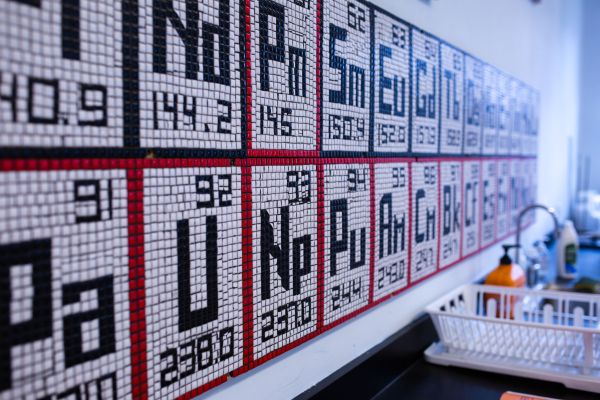
Steiner School Waboba Experiment
Originally Published in the Waboba Journal
Earlier this year, Noelle Frerichs, a physics teacher at Rudolf Steiner High School in Ann Arbor, Michigan, reached out to us about wanting to get her hands on Waboba Pro Balls for an upcoming classroom experiment she was doing. The experiment would involve throwing balls up in the air to calculate the height of each throw using knowledge of the speed of free fall. At first we offered to send Moon Balls since they bounce super high, but Noelle advised it was best to stick with the Waboba Pro balls to get the desired results. (Moon Balls would hit the ceiling in the gym, which would make it problematic for the calculation. Naturally.)
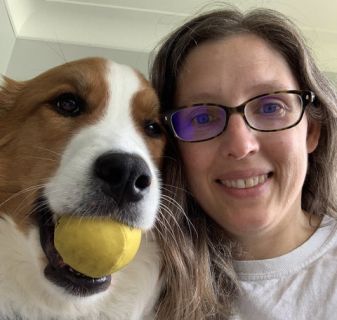 You see, Noelle was planning a series of labs for her 10th grade physics (mechanics) class, where the students discover the acceleration of objects in free fall and learn to calculate the speed and height of a projectile. She thought of the gel Waboba balls because her dog has the pet version - the Waboba Fetch (she has 4, a true furbobian). Noelle knew her students would feel safer trying to catch soft Waboba balls over a hard softball, and others would feel safe with balls flying over their heads too. Plus, they could do the experiment in the gym if needed, and the Pro balls would be heavy enough to get good height, minimizing the effect of air resistance, which would skew their results.
You see, Noelle was planning a series of labs for her 10th grade physics (mechanics) class, where the students discover the acceleration of objects in free fall and learn to calculate the speed and height of a projectile. She thought of the gel Waboba balls because her dog has the pet version - the Waboba Fetch (she has 4, a true furbobian). Noelle knew her students would feel safer trying to catch soft Waboba balls over a hard softball, and others would feel safe with balls flying over their heads too. Plus, they could do the experiment in the gym if needed, and the Pro balls would be heavy enough to get good height, minimizing the effect of air resistance, which would skew their results.
After we sent Noelle some Waboba Pro Balls on the house (we love our teachers), she kept us posted about the experiment and answered some of our other questions too. We hope Noelle's story inspires other teachers to bring Waboba into the classroom to keep life and learning fun!
When/how did you first discover Waboba?
I first discovered Waboba in a small outdoor equipment store in Northport, MI. They sold the Waboba balls that you can bounce across the water and I bought one for my kids, then I later bought the set for dogs. My dog loves that ball, and it’s the only ball she will play with and chase! It’s also the way we get her in the water in the summertime.
How did your students respond to the experiment?
The students enjoyed throwing the Waboba balls as high as possible. They’re amazing because they’re soft but have a good weight to them, so they easily move through the air and can go very high. The students used timers to measure how long the balls were in the air in order to later calculate how high they could throw. Some students were throwing the balls over 50 feet into the air, but there were a few who were almost afraid to throw them and only tossed them about 7 feet high. They had to be encouraged to really throw them!
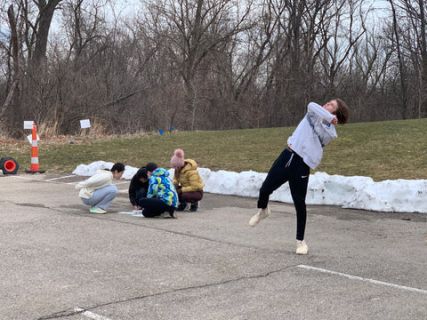 Any funny stories to share from the lesson?
Any funny stories to share from the lesson?
One of the students threw a ball so high that it went onto the roof of our gym. It’s still there because we don’t have a ladder high enough to get it down!
How is Steiner School different from other schools?
Something that sets Steiner (a Waldorf school) apart is that we work hard to meet students where they are developmentally. This means that in the preschool years the students’ time is primarily spent playing, to develop a healthy imagination, body and senses, as well as doing meaningful and fun work such as cooking and baking. They also hear many stories to foster the formation of mental pictures which later supports reading comprehension. In the lower grades the students transition from a more movement-based curriculum to learning about nature, cultures and sciences primarily through stories to which they connect deeply. The upper grades and high school are where the curriculum shift to more deeply intellectual topics and conversations around culture, literature and the sciences. Throughout our school the students are given a balanced curriculum including subjects lessons, arts, music and movement. Our student-centered approach also cultivates and establishes substantial relationships and helps develop social skills and moral character, as well as, offering a college-prep education.
How do you keep your students engaged in a tech-heavy world?
Something that sets Steiner apart is that we base our science lessons on experiences instead of textbooks or videos. In our science classes, students always start with hands-on experiences. Therefore, the sciences lessons begin in the laboratory and in the field. Observation and experimentation of the phenomena is the basis for the development of the laws and theories of modern science. The result is that we are educating the students to think and discover for themselves, which will serve them particularly well in the sciences but will also be beneficial no matter what their future career will be.
Favorite memory as a teacher:
I love seeing the growth of the students from 9th grade through 12th grade. Students come to us in 9th grade, some with many worries and insecurities and others with an overabundance of confidence. They are often very social but can be lacking in organizational skills, responsibility and social compassion. They grow and change so much from 9th to 12th grade and develop into caring and compassionate young adults.
Favorite memory as a student:
I loved chemistry and physics classes as a student. I remember the day my physics teacher did a demonstration where two balls were simultaneously released from the same height. One was launched horizontally and the other was dropped vertically. I was shocked that they hit the ground at the same time. I really thought the one that was launched horizontally would have taken longer to hit the ground. In retrospect, I would have had a hard time believing my teacher if he told us they would hit the ground at the same time without showing us that demonstration. Instead of focusing on questioning the truth of the statement that they would land at the same time, seeing the demonstration first engaged and interested me, and caused me to focus on questioning why they landed at the same time.
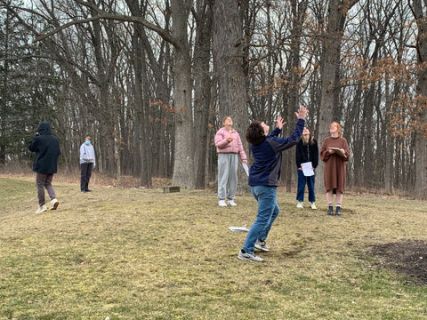 How do you Keep Life Fun with your students?
How do you Keep Life Fun with your students?
Because we start every topic with a demonstration or lab experience, the classes are naturally a lot of fun. The students enjoy hands-on learning. We also have engaging discussions in order to understand the phenomena that we investigate. The students enjoy sharing their thoughts and ideas, and it brings a social component to the lessons that would be absent if I was just lecturing. One day the students sat on scooters and raced through the gym to experience relative velocity. Another day I led them in an organized game of tug of war, an experience which led us to discuss vectors and the idea of equilibrium. There are so many examples of experiences the students have in the sciences, in chemistry, physics and the life sciences, throughout their four years in the high school. In their senior year the students travel to Maine as part of their Zoology lessons. We meet up with students from other Waldorf schools from across the country to study the coastal land and the abundance of life in the tide pools.
Did you have a favorite teacher when you were younger that inspired you to teach?
When I was in high school, I had no inclination to ever teach. I was very shy and wasn’t comfortable being in front of a room. My speech class in college was terrifying. I went to school to be an engineer and worked in the automotive industry for 13 years. Although I enjoyed my co-workers and many aspects of engineering work, I felt drawn to do something more meaningful. I’d had children by that point and had discovered the local Waldorf school. I was impressed by the curriculum and the way it built compassion, interest, imagination and logical thinking. Having spent 13 years in engineering, I could directly see the connections between the skills being built in the school and the skills needed for a successful career in engineering.
What inspired you to teach physics?
In order to truly understand a phenomenon, you have to understand it through your own experience. If someone were to give you a mathematical formula explaining motion, you might be able to understand the math, use it to calculate the position vs time, and even graph the motion. However, in order to truly make sense of the model you’d have to be able to connect it to your own experience. You’d have to be able to visualize the motion of the ball. It would be helpful to connect to your experience of throwing a ball straight up, or as far horizontally as you can. Through your own experience you already know and understand so much more than you realize. By connecting to that experience and then applying the math, you can understand the phenomena and the mathematical model that follows. Starting out of their own experience trains students to use their own experience to support their understanding. It also helps them to develop self-confidence as they realize the inherent knowledge they can tap into if they just take the time to recognize what they already fundamentally know to be true through their own experience. I wanted to teach physics in order to help students realize that they have the capacities to figure things out, and to give them experiences and practice doing so, in order to help them develop interest in the world and confidence in themselves.
Thanks to Noelle for taking the time to answer our questions and for sharing her story with us. We wish we were in her class!

Check this for more information !, Rajawali888 ,
If you are looking for the best games in Southeast Asia, Rajawali888 or Rajawali888, or this Rajawali888 it will be more interesting